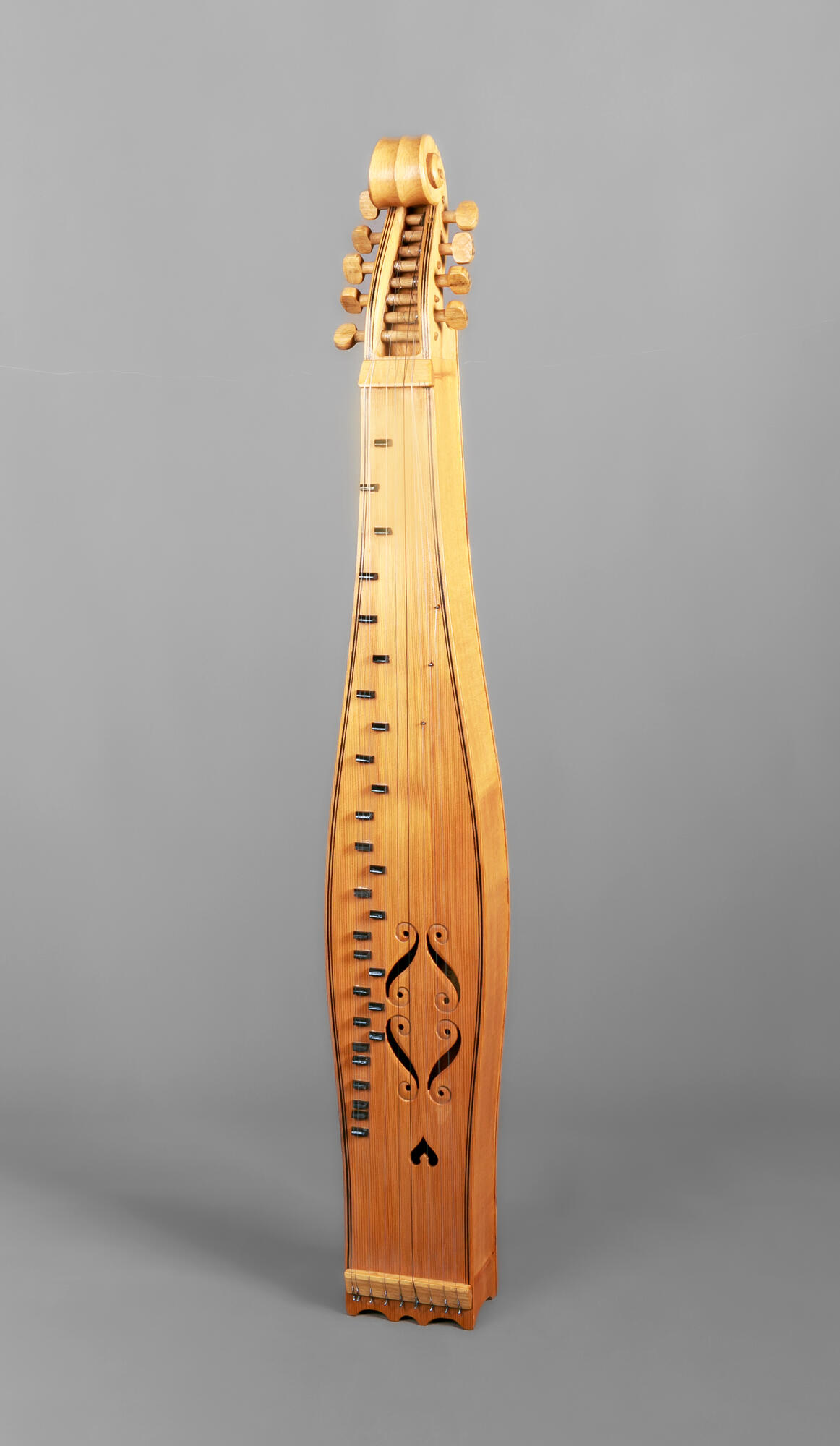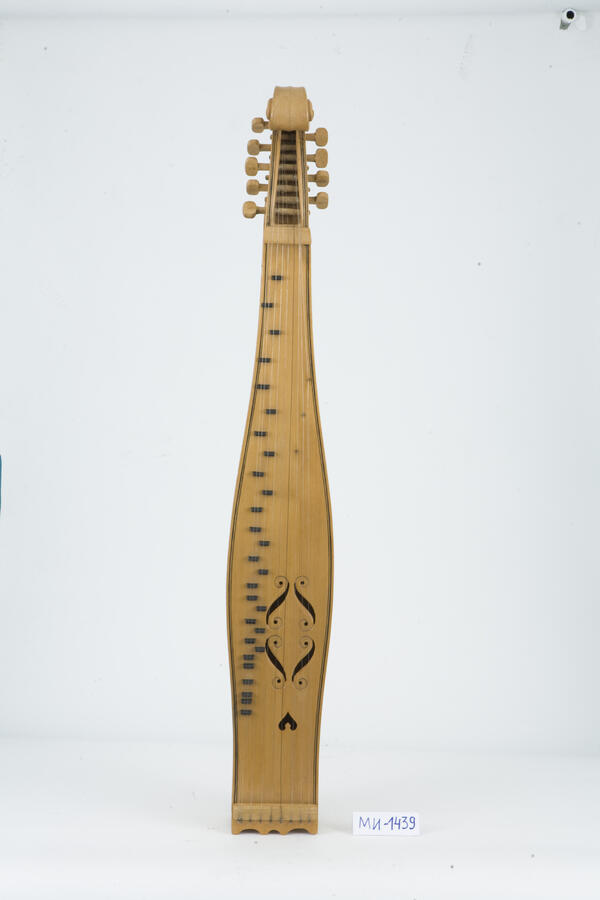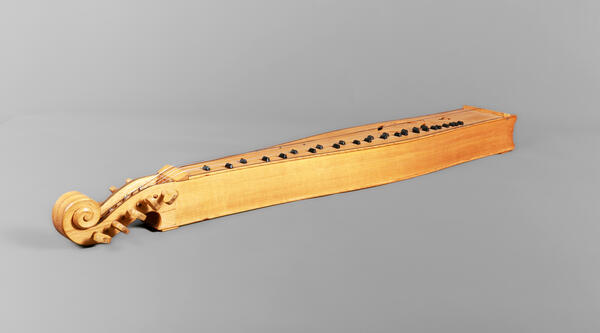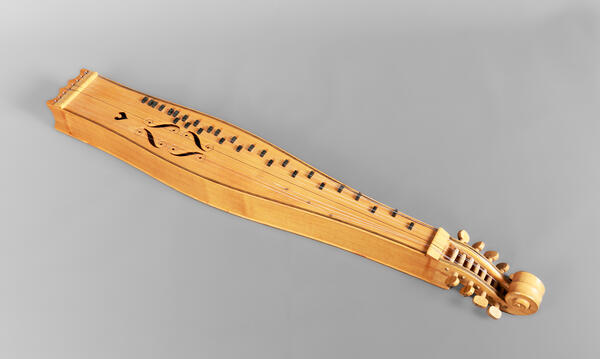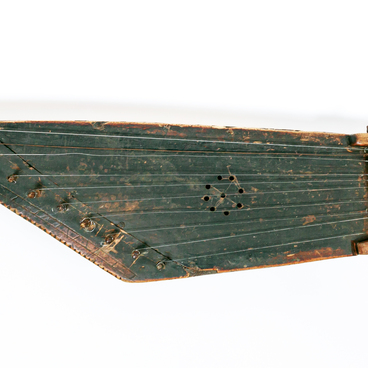The langeleik is a Norwegian string instrument, a droned zither. In Norwegian, its name means “a long instrument.” The earliest langeleik references date back to 1622 when it was known as the “langspil.”
In the 17th and 18th centuries, the langeleik was popular among both rural and urban population. Until the mid-19th century, it was popular across Norway, but by now Valdres is the only area where the langeleik has a living tradition.
The instrument has an elongated body, slightly widening at the bottom. At the top, this box is equipped with a head consisting of a pegbox and a scroll. The closest string to the musician is a melody string while the other ones are drone strings.
Under the melody strings, eighteen wooden frets were placed in two rows. The performer holds down the melody string with the index, middle and ring fingers of the left hand while striking the string with a plectrum held in the right hand.
This langeleik was presented to the Museum of Music by Victoria Bachke, the founder and first director of the Ringve Museum, the national museum of musical instruments in Trondheim, Norway. Born in Russia, Victoria Bachke emigrated to Norway during World War I. Her husband Christian Bachke was a music connoisseur and dreamed of becoming a pianist when he was young.
Christian Bachke assembled a collection of musical instruments but died before he could open a museum in his manor. After his death, Victoria decided to fulfill her husband’s dream. Soon, local newspapers started publishing articles about an energetic woman who brought unusual musical instruments from her journeys across Norway and other countries.
In October 1952, the museum opened its doors, and nowadays its collection houses over 2,000 items. Victoria Bachke is one of the few Russians who has left an important mark in the history of Norway. She became the subject of a book and even a chamber opera. In 1963, she came to the Soviet Union where she met the minister of culture Yekaterina Furtseva and visited the Museum of Music.
In the 17th and 18th centuries, the langeleik was popular among both rural and urban population. Until the mid-19th century, it was popular across Norway, but by now Valdres is the only area where the langeleik has a living tradition.
The instrument has an elongated body, slightly widening at the bottom. At the top, this box is equipped with a head consisting of a pegbox and a scroll. The closest string to the musician is a melody string while the other ones are drone strings.
Under the melody strings, eighteen wooden frets were placed in two rows. The performer holds down the melody string with the index, middle and ring fingers of the left hand while striking the string with a plectrum held in the right hand.
This langeleik was presented to the Museum of Music by Victoria Bachke, the founder and first director of the Ringve Museum, the national museum of musical instruments in Trondheim, Norway. Born in Russia, Victoria Bachke emigrated to Norway during World War I. Her husband Christian Bachke was a music connoisseur and dreamed of becoming a pianist when he was young.
Christian Bachke assembled a collection of musical instruments but died before he could open a museum in his manor. After his death, Victoria decided to fulfill her husband’s dream. Soon, local newspapers started publishing articles about an energetic woman who brought unusual musical instruments from her journeys across Norway and other countries.
In October 1952, the museum opened its doors, and nowadays its collection houses over 2,000 items. Victoria Bachke is one of the few Russians who has left an important mark in the history of Norway. She became the subject of a book and even a chamber opera. In 1963, she came to the Soviet Union where she met the minister of culture Yekaterina Furtseva and visited the Museum of Music.
